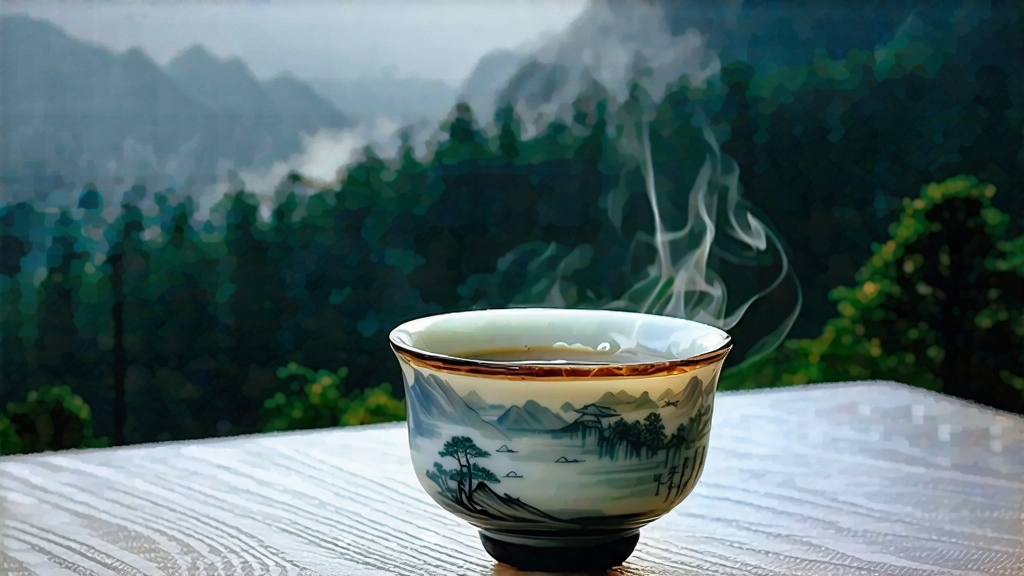
When European tea caravans first reached the bustling ports of Amsterdam and London in the early seventeenth century, the chests they unloaded carried an unfamiliar fragrance—sweet resin, smoked meat, and a whisper of dried longan. The cargo was Bohea, a name later anglicised to black tea, and its most charismatic expression was Lapsang Souchong, the original black tea born in the precipitous Wuyi Mountains of Fujian Province. Today, while Keemun and Assam fill supermarket shelves, Lapsang Souchong remains the charismatic elder whose campfire aroma whispers of misty cliffs, bamboo-withering sheds, and the ingenuity of tea masters who turned spoilage into signature.
1. Historical tapestry
Local legend fixes the birth year at 1646, when Qing soldiers quartered in Xingcun village forced farmers to speed-dry freshly plucked leaves to meet rising military requisitions. In desperation, the villagers spread the tea over pine-fired hearths, absorbing smoke that masked any staleness after the long march to market. The Dutch, already enamoured of tobacco, recognised a kindred spirit; by 1669 the British East India Company listed “Lapsang” at 21 shillings per pound, twice the price of green tea. The name itself is a linguistic palimpsest: “Lap” from the Fuzhou dialect lao (pine), “sang” from the village Song, and “souchong” meaning “small sort”—the slender, late-spring leaves plucked below the top two tiers used for prized white Pai Mu Tan.
2. Terroir and cultivar
The Wuyi massif is a UNESCO geopark where weathered igneous cliffs shed mineral-rich soils into narrow valleys. Morning fog diffuses sunlight into a soft, shifting mosaic that slows photosynthesis, concentrating amino acids and volatile aromatics. Two indigenous cultivars dominate: Xiao Ye Zhong (Small Leaf) and the rarer Da Ye Zhong (Broad Leaf). The latter, with its waxier cuticle, withstands the rigorous smoking process while retaining enough moisture for enzymatic oxidation. Elevation matters: teas harvested above 800 m, labelled “high mountain,” develop a natural sweetness that balances smoke, whereas lower gardens yield a sharper, tarrier profile prized in Middle-Eastern markets for blending.
3. Crafting smoke into silk
Modern production still follows a 400-year-old choreography, though electricity now replaces foot treadles. Picking begins on the third day after Grain Rain, when three half-open leaves crown a tender bud. The pluck is wilted on bamboo screens set over riverside rocks; cool mountain air reduces moisture to 65 % within two hours. Rolling follows, but unlike CTC (crush-tear-curl) methods elsewhere, Lapsang is gently twisted to preserve leaf integrity. Oxidation occurs in cedar-lined trays; the pile is turned every twenty minutes while ambient temperature hovers at 24 °C. The critical act is smoking, performed in a three-room pine loft. First, fresh resinous Pinus massoniana logs are lit and immediately smothered, generating a cool, aromatic smoke that rises through mesh racks. Masters gauge duration by nose alone: 2–3 hours for traditional style, 30 minutes for the milder “unsmoked” Zheng Shan Xiao Zhong aimed at contemporary palates. A final charcoal bake at 80 °C fixes the flavour and drops moisture to 5 %, ready for velvet-lined chests.
4. Variations under one smoky umbrella
Purists recognise three stylistic siblings. Original Pine Smoke uses only local pine and bamboo fire; the cup is burgundy, the aroma reminiscent of lapsang bacon and winterfruit. Fruit-Wood Aroma, developed for German buyers in the 1970s, substitutes cherry or pear wood, yielding a softer, almost ham-like sweetness. Wuyi Gongfu Lapsang, a niche micro-lot, omits smoking entirely; instead, leaf is withered over charcoal embers, producing a malt-driven liquor akin to Muscat grapes. Each style carries the European Union’s Protected Designation of Origin (PDO) since 2004, a rare honour for a Chinese tea.
5. Brewing: ritual and rebellion
Western recipes often prescribe boiling water and five-minute steeps, but such treatment scalds the delicate smoke into creosote. Gongfu ceremony offers nuance. Pre-heat a